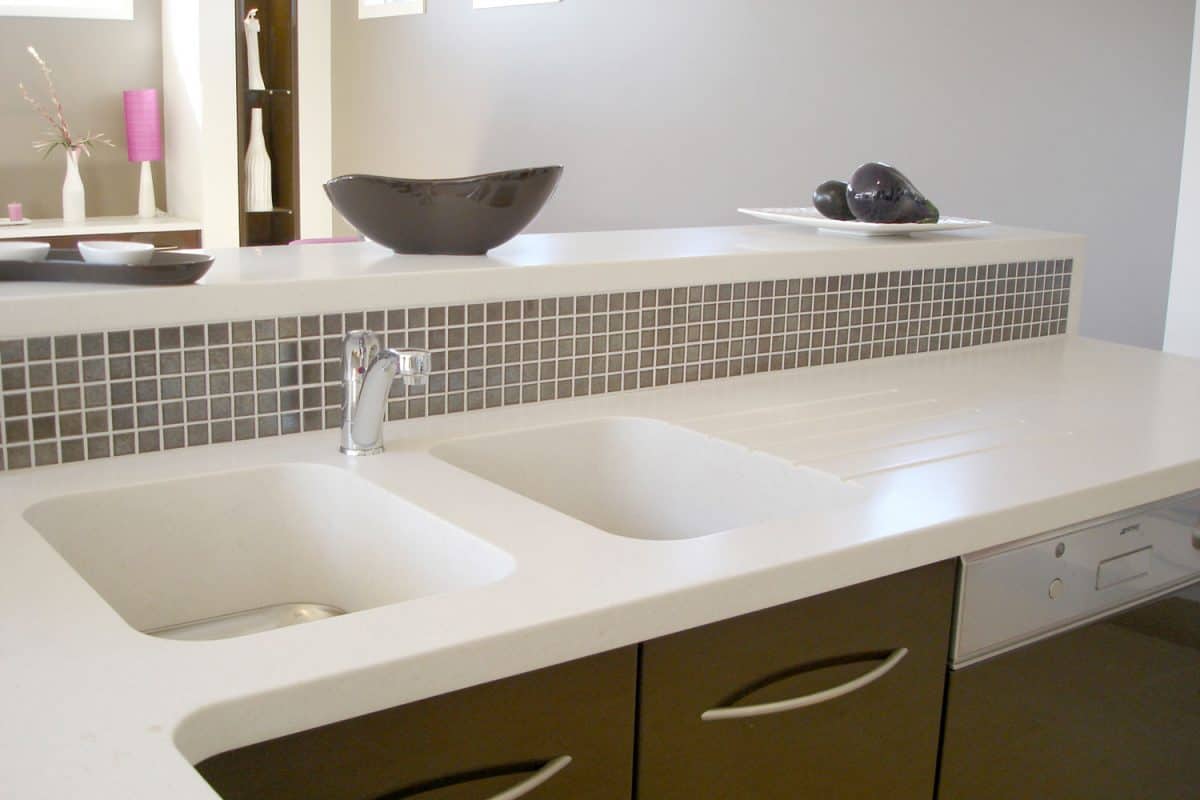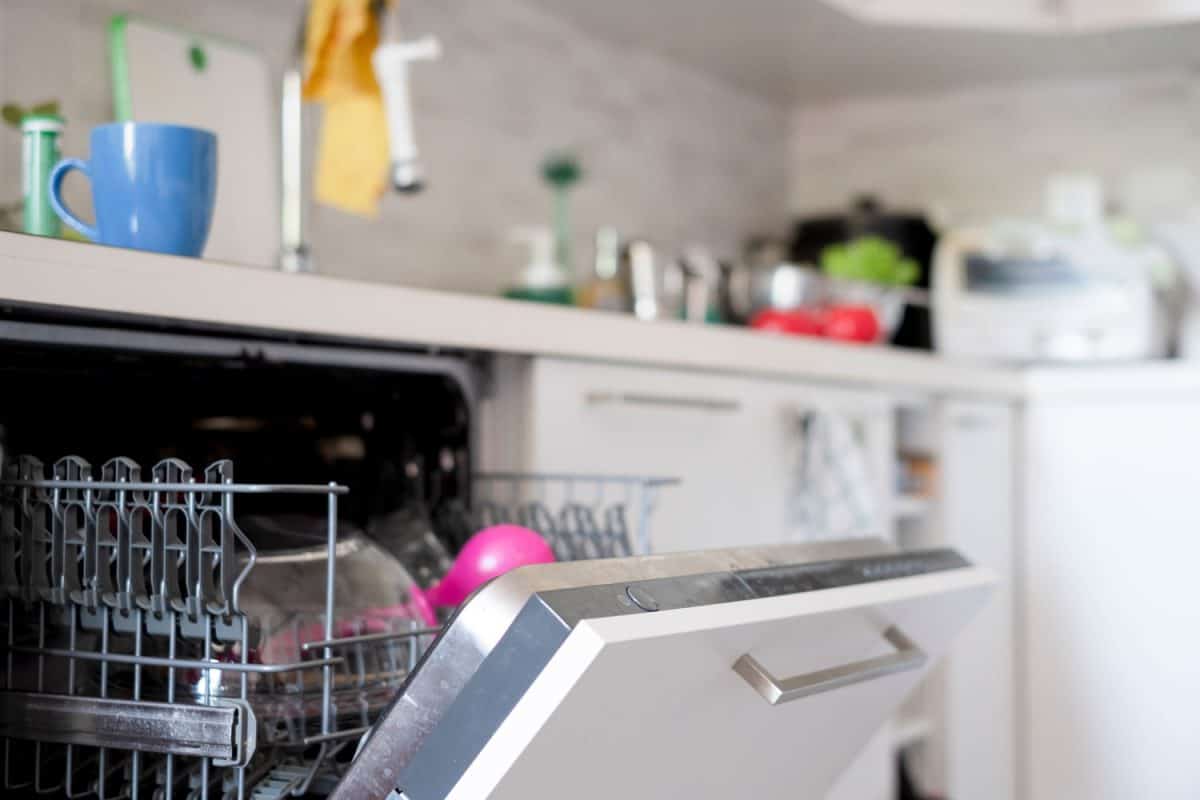A Dish Washer for a Kitchen With No Cabinet Space
We may get commissions for purchases made through links in this post.
Dishwashers are an essential appliance for maintaining functionality in the modern home kitchen. Suppose you are considering purchasing a new dishwasher; you probably have wondered if integrated dishwashers need a cabinet. We've researched this topic and have discovered well-researched information to share with you!
No, integrated dishwashers do not need a cabinet. Instead, you need an opening where the dishwasher can be installed with sufficient space to accommodate the appliance's size and provide access to the kitchen's plumbing. Also, it is crucial to install the dishwasher where it has cabinets on each side for structural support.
Perhaps you are considering purchasing an integrated dishwasher for your home, and you have a few questions before ordering your new appliance. Are you wondering if fully integrated dishwashers are installed with the feet of the appliance set on the floor? Do fully integrated dishwashers need a handle? These are great questions. Please continue reading; we have well-researched answers to share with you!

Do I need a cabinet for my dishwasher?
No, cabinet space for your dishwasher is not required for installation. Whether installing a freestanding or integrated dishwasher, you will need to select an installation opening that has accessibility to a dedicated circuit run from the electrical service panel to the kitchen, water connections, and ample room for the draining hose.
Only an opening that fits the measurements of the appliance is necessary for a successful installation.
Ideally, the opening for installation will be next to the kitchen sink with a cabinet on the opposite side for easy installation and the necessary drain and water connections.
Many, all though not all, dishwashers are connected to the garbage disposal unit housed under the kitchen sink. When the drain hose flushes dirty water out of the dishwasher, it will flow through the garbage disposal and empty via the kitchen sinks piping.
Depending on your kitchen's size and decorating style, you could choose to install the dishwasher in cabinet space. This would be a wise choice if the cabinet's opening accommodates the dishwasher's size and it is close to the required plumbing and wiring.
Suppose you would like your dishwasher door to match the rest of your kitchen cabinetry for aesthetic purposes. The seamless look of the appliance doors matching the cabinet works well in several decorating styles.
Plus, the added weight of the cabinet door will help it close better and reduce the elasticity of the spring door. Especially if your dishwasher is brand new, the doors springs will likely be very stretchy.

Do fully integrated dishwashers need a handle?
No, a fully integrated dishwasher does not need a handle. Although many home designers and homeowners do choose a dishwasher with a handle, it is not necessary. Moreover, most home appliance manufacturers offer options that have handles and models that do not. These appliances are designed to be flush with the kitchen's countertop.
Choosing the option that best suits the aesthetic of your kitchen and personal decorative preferences should determine whether the model you purchase has a handle or not. Suppose you strive for a sleek, integrated modern aesthetic–consider choosing the dishwasher without a handle.
The fully integrated dishwasher will help the kitchen look more spacious. You could add a cabinet door to the dishwasher's front, and the appliance will seamlessly blend into the cabinetry.
Suppose you choose an integrated dishwasher with a handle. It will not affect the performance of the dishwasher or change the installation process. Rather the handle will be visible and slightly detract from the kitchen's integrated aesthetic.
Have you ever wondered what would happen if you stopped using your dishwasher? Click here to read our article that explains this topic with well-researched information.
Can I have an integrated dishwasher freestanding?

No, an integrated dishwasher is not designed to serve as a freestanding appliance. Because the integrated dishwasher was manufactured for installation flush with the countertop, it will not stand properly if installed as a freestanding dishwasher.
Let us establish the differences between integrated and freestanding dishwashers. Firstly, the integrated dishwasher will be semi-permanently installed near the sink, flush with the kitchen countertop. The integrated dishwashers are compact and slender, perfect for utilizing less space and increasing the kitchen's functionality.
Also, integrated dishwashers are the quietest option because the installation process and cabinetry helped muffle disruptive noises.
Freestanding dishwashers are are the most commonly utilized option for most apartments and houses. These appliances can be installed near the sink or an opening with access to electricity and water connections. Freestanding dishwashers will not be flush with the countertop nor integrated into the kitchen's cabinetry.
Another great feature these provide is that these freestanding appliances are not usually installed permanently. If you move, these are relatively simple to disconnect and reconnect at the new property.
Are you interested in learning more about installing dishwashers? Click here to read our article that expounds on how to secure a dishwasher to the cabinets.
Do integrated dishwashers sit on the floor?
Generally, integrated dishwashers do set directly on the kitchen floor. However, this depends on the height of the countertop and the size of the appliance. Dishwashers are either 18′ or 24′ inches wide, and the height is typically 34′ to 35′ inches. The height varies from brand to brand more than other measurement factors.
If you are preparing your kitchen for installing your new integrated dishwasher–measure and remeasure your kitchen to ensure the model you are buying will fit properly. Also, AO suggests adding five centimeters of extra space for the depth of the dishwasher and a few centimeters of additional space at both of the sides to make the installation process smoother.
The added space is vital for the electrical hookups, draining hoses, and water connections which takes a fair amount of space.

Suppose the flooring in the kitchen beneath the dishwasher is uneven. That issue can be quickly addressed by adjusting the dishwasher's level feet at the back of the appliance. Generally, these handy leveling feet can fix problems with uneven flooring or if the dishwasher is a bit shorter than the installation opening.
The feet are adjusted by turning to the left to lengthen and to the right to shorten the leg. Always adjust both legs. Failure to do so will affect the weight distribution the legs are holding, and the dishwasher will not be level.
If the dishwasher is too short for the installation opening, one could address this issue by placing small wooden blocks under the dishwasher's feet. If you try this method, remember to readjust the level feet again to accommodate the changes in height the blocks create.
In closing
Dishwashers are a great addition to your kitchen that could help you wash your dishes efficiently for yourself and your loved ones. Deciding where to install a dishwasher is a sizable decision that requires careful measuring and planning. We certainly hope this article has helped you understand the topic of dishwashers and where these appliances should be installed. Please visit Kitchenseer.com soon for more informative and helpful content!
Be sure to check out some of our other posts before you go to help further your knowledge regarding dishwashers:
Do Dishwashers Have Garbage Disposals?
Do Dishwashers Waste Or Save Water And Electricity?
How Long Should A Bosch Dishwasher Cycle Run?
A Dish Washer for a Kitchen With No Cabinet Space
Source: https://kitchenseer.com/do-integrated-dishwashers-need-cabinet/